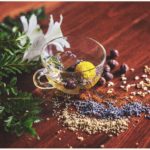Thanks to social media there are so many health claims to vaginal steaming, also known as Yoni steaming. Do you really need a “facial” for your “Vag”?
Health Claims of Yoni Steaming:
- Reduction of menstrual cramps
- Increased fertility
- Perineum healing after childbirth
- Stress reduction
- Increased energy
- Reduction in fatigue symptoms
- Reduction of headaches
- Hemorrhoid treatment
- Putting the uterus back in place after birth

Mountainside Medical Speculum
Thanks, Gwyneth!
All the hype about vaginal steaming started when Gwyneth Paltrow bestowed her favor on the Mugwort V-Steam at a Spa in Santa Monica. They claim the V-steam “cleanses your uterus” and “balances female hormones.” How can steam enter the vagina and then enter the uterus to cleanse it? This isn’t physically possible. You’d have to insert a speculum in the “Vag” just to get the steam into that part of your body! The walls of the vagina are collapsed against each other except during arousal or sex. It’s possible to steam the vulva, which is the outside of the female genitals, but WHY?
The Gateway Has a Gatekeeper
The cervix is basically the gateway from the vagina into the uterus. The cervix has glands that produce a mucous barrier to act as a gatekeeper each month. That thick mucus prevents pathogens and other harmful bacteria from entering the uterus. So, the steam can’t possibly get past the collapsed walls of the vagina and into the uterus either. Even if a speculum is used, the steam cannot penetrate the uterus. It’s more likely to increase your risks for burning the vaginal tissues with steam that is too hot, or developing a yeast infection or a bacterial infection in the vagina.(Medical News Today)
Snake Oil

from amc.com
Snake Oil definition = a product of little real worth or value that is promoted as the solution to a problem. You can probably tell by now, I’m a BIG DOUBTER! According to Medical News Today, “Currently, there are no scientific studies that prove these purported benefits. However, some people say it works by enhancing blood flow to the vaginal tissues, which can promote healing.” Some claim that people in other cultures have done Yoni steaming for hundreds of years, and those cultures believe it has benefits. But, people thought for thousands of years the world was flat. For centuries, doctors used to bleed their patients to prevent or cure diseases. Just because a lot of people believe something is true, does not make it true. Vaginal steaming has “no benefit, promotes a serious misunderstanding about anatomy and physiology, and has the potential to harm,” writes gynecologist Jennifer Gunter in her recent book, The Vagina Bible. “In short, it’s a scam.”
Did Vaginal Steaming Really Help You Get Pregnant?
I frequently see social media posts about how someone with infertility got pregnant because

from voegelinview.com
she did vaginal steaming. I am happy that she got pregnant, but if the vaginal steaming had anything to do with it, it was clearly a placebo effect and/or a coincidence. There is no evidence that it has benefits.
I’d like to see evidence that steaming water infused with herbs 18-24 inches below your perineum can change your hormones, cause ovulation and an egg to be released, clear the pathway through your fallopian tubes, cause uterine fibroids to get out of the way of the implanting placenta. Does that really make sense?
More Risks Than Benefits?
There may be more risks than benefits. The vagina is a self-cleaning organ in the woman’s body. The vagina is a mucous membrane that maintains Ph balance with good bacteria, lactobacillus. Washing it out with soap, vinegar, herbs, or anything upsets the Ph balance and kills the good bacteria.
Douching can be compared with Yoni steaming. Up to 40% of women in the U.S. say they douche to feel fresher, rid their vagina of foul odors, avoid contracting STD’s, and prevent pregnancies. There is no medical evidence that douching prevents or resolves any of these issues. Even though many women believe that douching is a normal part of hygiene, science shows us it can cause more problems than you can imagine.
Risks of douching:
- Pelvic inflammatory disease
- Bacterial vaginosis
- Cervical Cancer
- HIV transmission
- STD’s
- Vulvovaginal candidiasis
- Infertility
Douching can upset the vagina’s Ph balance. Though advertisements and products promote the use of douching, medical evidence shows us they do more harm than good.
“However, there is no scientific evidence to support vaginal steaming. In general, the vagina does not require “cleaning.” In fact, other practices like douching—which also has been promoted in the past for vaginal cleansing—have long been discouraged. Since the vagina is designed to host a particular array of bacteria, vaginal cleansing can alter this normal balance and may theoretically increase one’s risk of vaginal infections. For that reason, gynecologists do not routinely recommend this practice.
— by Hope Ricciotti, M.D., and Hye-Chun Hur, M.D., M.P.H.
Editors in Chief, Harvard Women’s Health Watch
Your Vagina is Not Supposed to be Like Your Spotless Kitchen Counter!
Steaming may do the same thing that douching does – remove normal vaginal flora and allow the overgrowth of pathogens (a bacterium, virus, or other microorganism that can cause disease.) When we “cleanse” the vagina with steam, douching or otherwise, we risk removing the healthy flora, lactobacilli. Lactobacilli bacteria protects the vagina against overgrowth of disease-causing pathogens.
Moist Heat?
Vaginal steaming adds moist heat to the vaginal opening. This moist heat puts a woman at risk for yeast infections and bacterial infections. Depending on what herbs are used in the steaming water, these risks could be even greater. If heat makes you feel good, have a nice soak in the tub!
Herbal Infusions
If you wanted to make your own infusion, below are some of the herbs used and their benefits. There are a variety of herbs used during vaginal steaming. These are some claims of benefits of these herbs:
- Mugwort – balances female hormones, protects uterus from ulcers and tumors, stimulates menstrual cycle and decreases pain from cramps.
- Basil – reduce menstrual pain, brings on menses.
- Rosemary – anti-bacterial, inhibits yeast
- Lavender – promotes menses
- Yarrow – treats ovarian cysts (not sure if it reduces them or what “treats” really means)
- Oregano – increases menstrual flow, prevents infection.
Does your body absorb these herbs through the skin or vaginal tissue? It’s questionable whether the amount absorbed can accomplish more than feeling comfortable and relaxed – kind of like steam during a facial does.
Placebo Effect?
It may be worth it if the beneficial effect is created because of the woman’s belief in the treatment. But is it worth the expense? That answer is purely subjective. If a woman feels better after her Yoni steam, and gets the physical response she wanted, then for her it was worth it.
Why Not Ingest the Herbs Instead

Dried mugwort from amazon.com
Let’s take Mugwort as an example. I chose Mugwort because it is listed as one of the top ingredients for vaginal steaming. Mugwort is an invasive weed which is native to Asia and parts of Europe. It can cause allergic reactions in some people, including nasal symptoms and skin rashes. It comes in pill form as a supplement, tinctures, essential oils, and tea, and comes in homeopathic form, and some cultures use it in cooking. Women have been taking Mugwort for thousands of years for a variety of menstrual problems – irregular periods, painful menstruation, and as a uterine tonic to stimulate the uterus. Even though thousands of people have used it for thousands of years, there is still no scientific evidence of its benefits. But we do know that by ingesting the herb in tincture, pill, or homeopathic form, it is more likely to be absorbed through digestion than through steam to your perineum.
Compounds Absorbed Through Skin?
A study done on absorption of volatile organic compounds in drinking water showed “skin absorption represents a significant route of exposure. Depending on exposure conditions (temperature between 23-25 degrees C or 73-77 degrees F) an average of 64% absorption rate. Does water produce steam at 73-77 degrees? Simply, if you are having issues, consider consulting a professional, an herbalist, a naturopath, a homeopath, and acupuncturist, or a gynecologist.
You Have Options

From steamychick.com
Don’t forget that you have options. You can pay lots of money at a spa to have a tube or speculum inserted, by a medical practitioner, into your vagina, so that your vagina is open for the steam. Or you can sit on a home-made box with a hole in the top with a steaming bowl of water and herbs under the box and steam your perineum and hope that steamy magic works its way into your vagina, uterus, and fallopian tubes. Or you can take herbal supplements or homeopathic remedies orally. You can go to your gynecologist. You can see an herbalist or a homeopath, a naturopath, or an acupuncturist.
Find an Herbalist and Consult Your Gynecologist
No matter the route you choose to use the herbs, either steaming or taking orally, make sure you find a certified herbalist. The American Herbalists Guild explains what an herbalist is, what is herbal medicine, the difference between pharmaceuticals and herbs, the safety, and the different types of herbalists and how to find a credentialed herbalist. Or find a certified homeopath at homeopathycenter.org. Find an acupuncturist at nccaom.org. Consult your gynecologist and ask if he/she knows of any evidence of the risks and the benefits of vaginal steaming.
Use Your B.R.A.I.N. Questions
No matter the medical issue, in any situation, it’s important to use your B.R.A.I.N. These are informed consent questions. Asking these questions will help you gather all of the information you need so that you can make and informed decision.
- B – Are there proven evidence-based benefits?
- R – Are there proven evidence-based risks?
- A – Are there alternatives?
- I – Once you have the information, use your intuition. Weigh benefits/risks.
- N – Don’t forget that there is always the option of doing nothing.










